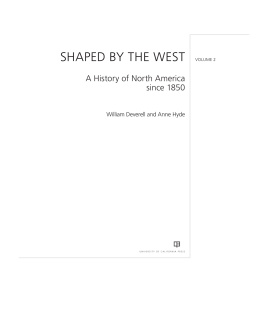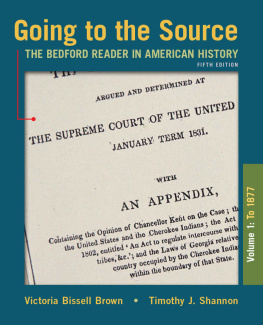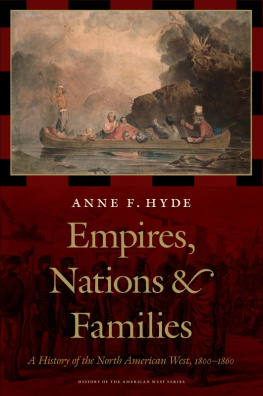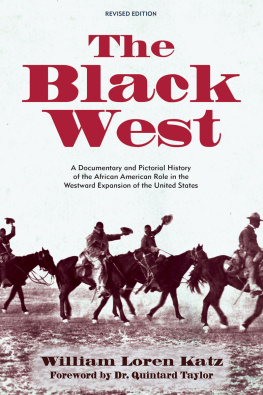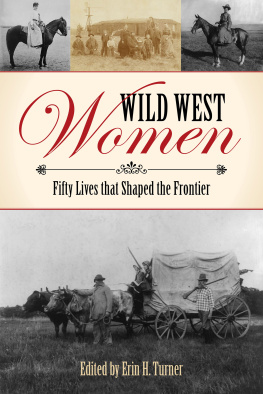Preface
These two volumes on the history of the American West first came about because of a really good idea that did not work. Twenty years ago, the two of us agreed to sign up for an innovative project aimed at tying regional history to the broadest sweeps of US history. The elegant intention for a two-volume annotated reader on the West was that it would supplement American history survey courses taught at colleges and universities in the West.
Broad-brush national issueswar, slavery, conquest, labor, gender and the family, cities, etc.would be elaborated upon by documents and images drawn from, and interpreted within, western settings. Students learning about Prohibition, for example, would address that topic and its long history by reading temperance and Prohibition sources alongside stories from western places: Colorado, California, Wyoming, Oregon, and others. Specific settings would shed light on the overriding topic, and students in the West would get to know their regions history better and more broadly.
Good idea, right? It was. And the first edition of these two volumes offered the two of us, friends and colleagues now for half our lives, a great opportunity to work on something together.
So what happened? The easy answer is that, for whatever reason or reasons, the survey courses on campus in the US West did not much bend to the regional illumination our books offered. Maybe the survey-course instructors did not want to alter the way they taught their courses. Maybe a textbook-driven syllabus could not easily accommodate two additional volumes of readings and exercises. Maybe the innovative idea required a bit more public relations energy than a busy publisher could be expected to provide.
But the books did not fail. They just hit a different target than the one we first imagined. Not long after they were published in 2000, we began to hear from our western history colleagues all over the country, who told us that our two volumes were a hit in their courses. Not their US survey courses but their western, or various versions of regional, history courses. The documents and images brought the Wests complex, chaotic history to life and to the ground. Voices of real people could be heard in the primary source records we had mined for the books. And our brief annotations and introductions helped our colleagues by adding context and scholarly perspective to historys themes, moments, and episodes.
The hook was unintended, but no less gratifying because of it. The books got out there, they got taught, and our colleagues told us that they liked using them.
So here we are, two decades later, launching them again. Were different, our students are different, the concerns of historians who focus on the West have changed, so these books are different. With a new publisher, everything had to be rethought, reorganized, and revised in light of how much the field of western history has changed in this century.
It still makes sense to pull the long history of the West apart, to make this a two-volume reader. There is an early West and a later West, though the dividing line is a slippery concept. We opted, once again, for a division deep into the American period, roughly at the Civil War moment. We expect that the books will be taught apart and together. One aspect of western history that has invigorated the field in recent times has been the brilliant scholarship illuminating the indigenous histories of the West, before and after Spanish contact, before and after American conquest. We have been careful to bring much of that work to bear in our documents, short essays, and bibliographies, which close each chapter in both volumes.
The West has grown since we wrote the first edition of these books. Western historians who were once pretty content with the continental and national outlines of the American West must now, thanks again to bold, new scholarship, look beyond conventional boundaries of the West as a trans-Mississippi or trans-Rockies terrestrial place. Our West, and our students West, is capacious and boundary-breaking, because the human beings who lived there and the ideas they carried with them crossed borders. We incorporate a West that is not defined by terra firma but is instead oceanic. The rise of transnational and Pacific histories within the western historical canons of scholarship has added much to our field. Now we ask how the West looked, and how people lived their lives, in and around the great Ocean that borders the western edges of a West we ought no longer delimit at high tide.
There are other ways in which the West has grown richer as a field of historical inquiry. Our fields embrace of environmental history, long strong, has only gotten more ambitious and interesting, and those prisms of analysis and those stories are reflected in these pages. Western history has long been a field in which breakthrough scholars have helped us better understand such concepts as gender and masculinity. Researchers whose work addresses sexuality have added magnificently to those foundations, and we are indebted to them here, just as we are to historians and others who address LGBTQ histories in the archives and narratives of western America. They bring us a stunningly human West, where people learned new things about themselves, did awful things to each other, and sometimes took great care. Throughout this project, our aim has been to make these books speak to a new western audience, using up-to-date scholarship, and simultaneously to relay to students just how exciting it is to be working in western history at this moment in American historical writing. Our archives grow, the people in them change, and our access to that knowledge gets easier every day. The stories and puzzles they yield have never been more compelling.


